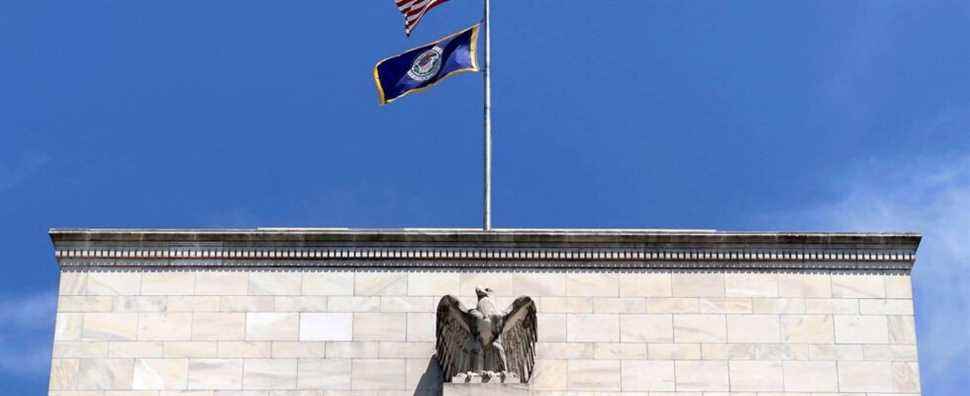The threat of inflation “higher and more persistent” than expected forces the US Federal Reserve to accelerate the reduction of its liquidity injections and now consider no longer one, but three interest rate hikes next year .
Unsurprisingly, members of the US Central Bank’s (FOMC) Monetary Policy Committee on Wednesday left its key rate where they placed it at the start of the COVID-19 pandemic, that is to say at this bottom value located in the narrow range between 0% and 0.25%. They also announced, however, that the reduction in their quantitative easing program that began last month will now be done twice as quickly so that new purchases of government bonds and Fed mortgage securities will pass. gradually from 120 billion per month last October to zero next March.
But the news that grabbed the most attention on Wednesday was in the FOMC’s September economic and financial forecast update. A majority of its 18 members there said they expected three 0.25 percentage point hikes in the Fed’s interest rates rather than just one next year. These three increases would be followed by three more in 2023, according to the same revised forecasts, then by two more in 2024.
The Fed had already indicated that it intended to be done with its quantitative easing program before starting to consider raising its interest rates. She also said that the start of this second step in the normalization of her monetary policy would have to meet much more demanding conditions linked to her dual mandate, in particular the threat that inflation would remain above its target of 2% and the sign of a return to a maximum level of employment.
On the employment side, the last few months have been marked by “solid gains”, and the unemployment rate is expected to return to its pre-pandemic average of 3.5%, predicts the FOMC. Despite everything, the United States still has almost four million fewer jobs than before COVID, raising fears that part of the workforce has withdrawn from the labor market, noted at the conference. press Fed Chairman Jerome Powell. “It will probably take longer than we thought. “
Priority to inflation
But it’s about inflation that the Fed worries the most right now. Since April, the central bank has been reiterating that the recent rise in prices was the result of temporary and global factors, such as the great disruption of consumption patterns in times of social distancing, the disruption of supply chains, and the explosion in prices of gasoline. gasoline. On Wednesday, inflation was suddenly no longer described as “transient” in the Fed’s statement, but “high”.
Jerome Powell says he is forced to admit now that inflation is “higher and more persistent” than expected. FOMC members continue to believe that it will drop by half over the next year, from about 5.3% to 2.6%, he said, but “we are not sure of anything.” In these circumstances, there will probably be no question of waiting long between the end of the quantitative easing program and the start of the interest rate hike, as was done during the last financial crisis.
This first increase in the rent of money in the United States should come in June, estimated the economist of the Mouvement Desjardins, Francis Généreux, in a brief analysis. This moment could arrive as early as March, thinks his colleague from the Bank of Montreal, Michael Gregory. This will depend in particular on the pandemic and its variants.
